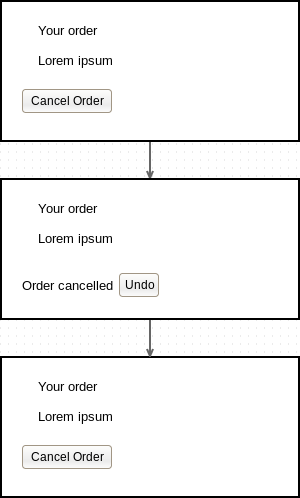I am working with order page. When the user presses on Cancel Order button, he should choose one of the following:
- Cancel order.
- (opposite of cancel) order. (this choice means don't do anything with order)
by default, this choice on other cases should be "
Cancel".
What is the opposite of cancel on this case?
Keep in your mind, cancel is usually what you press to decline an action in a UI situation, and here on my second choice, I am trying to do that.





